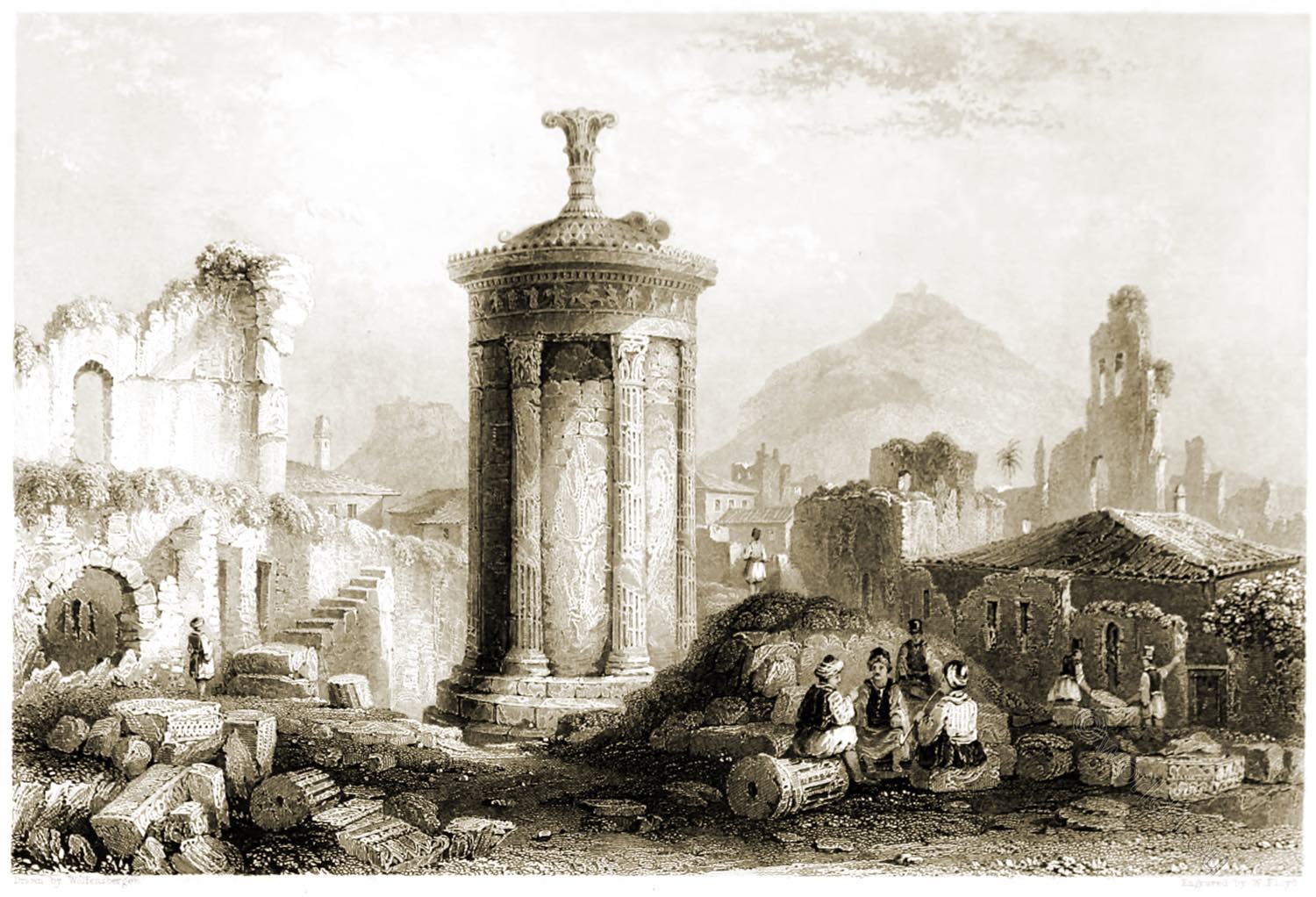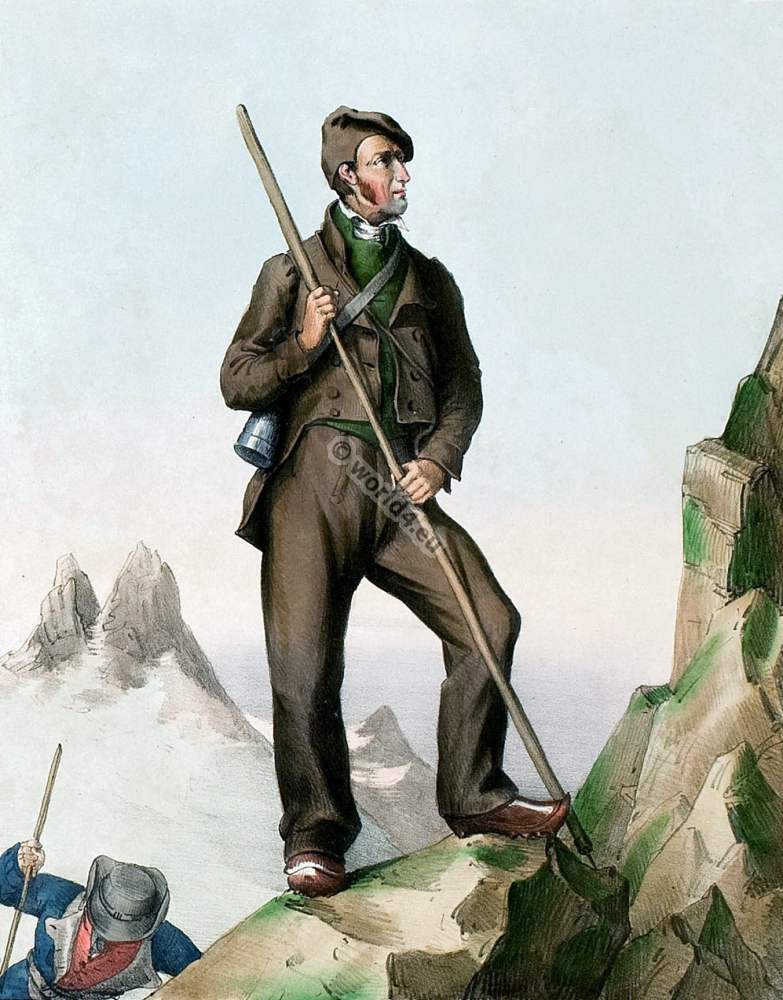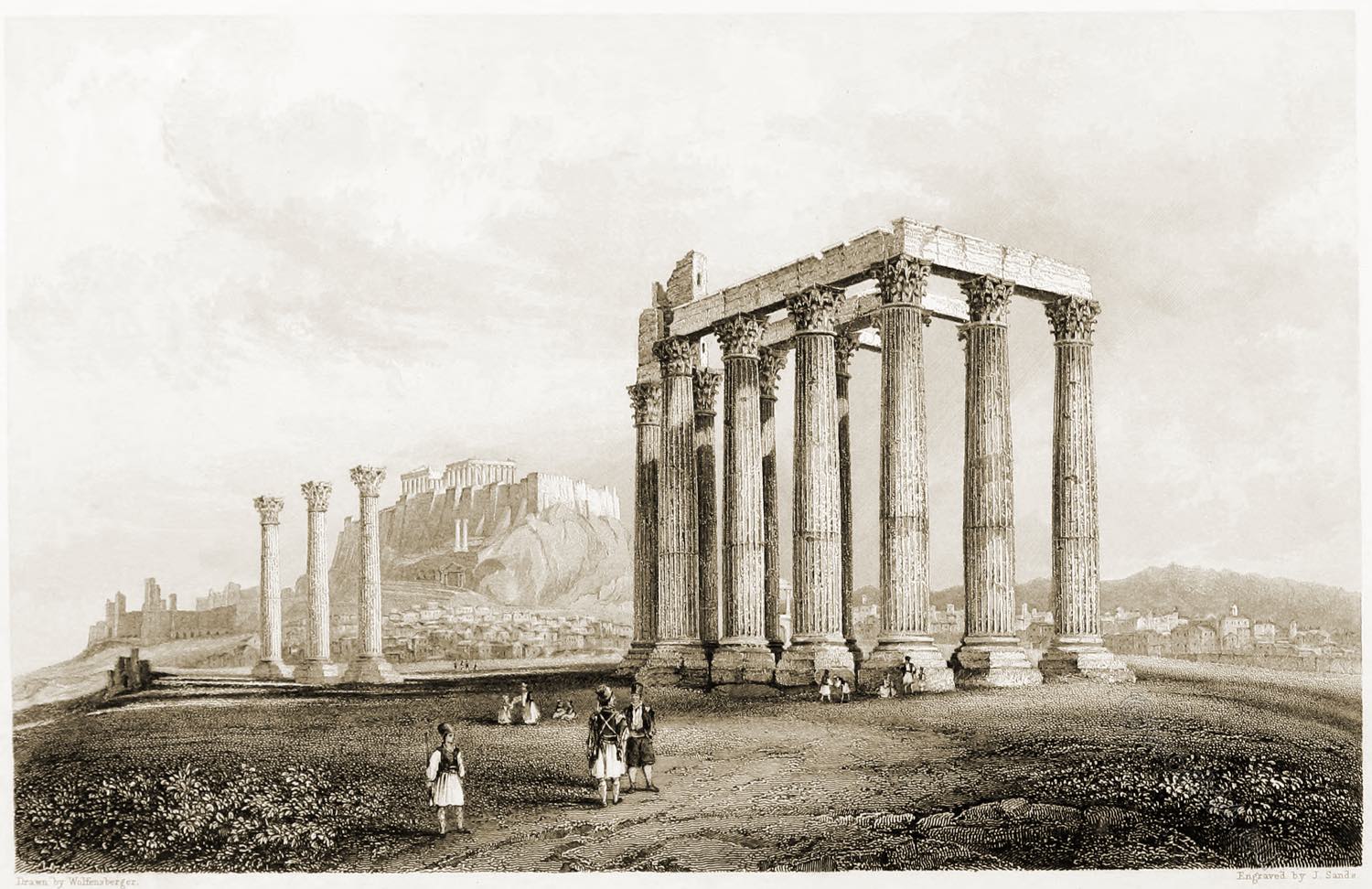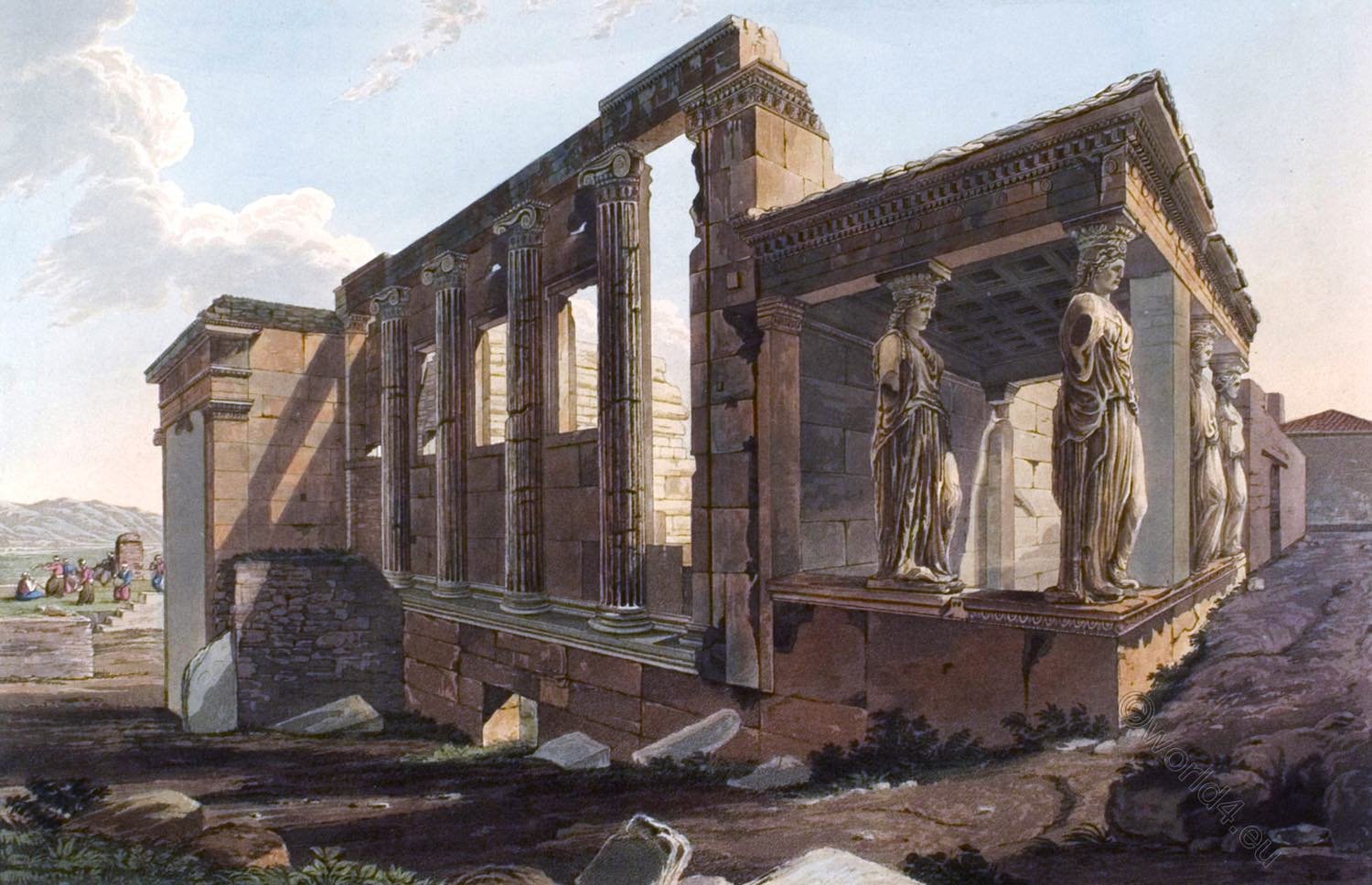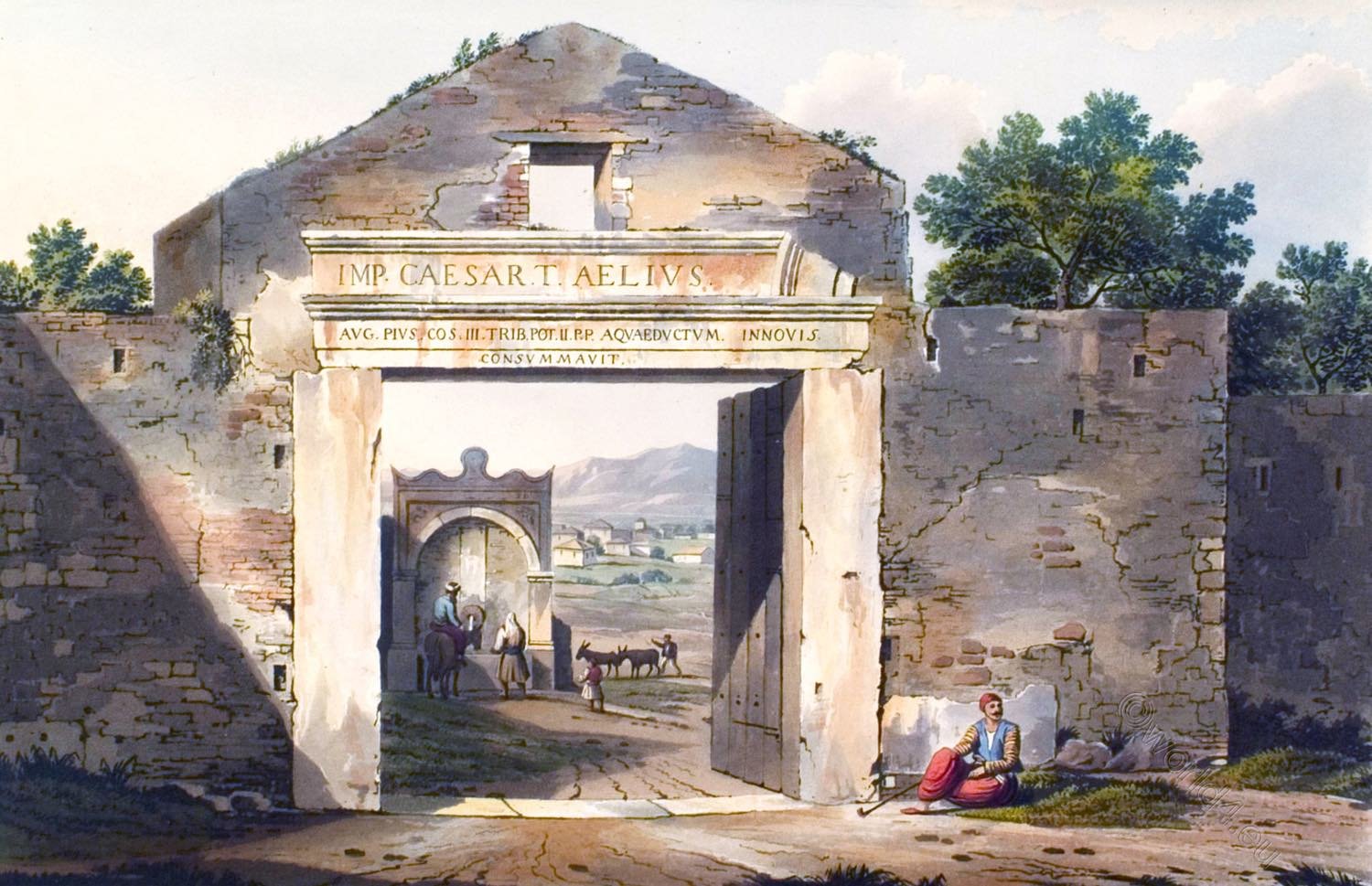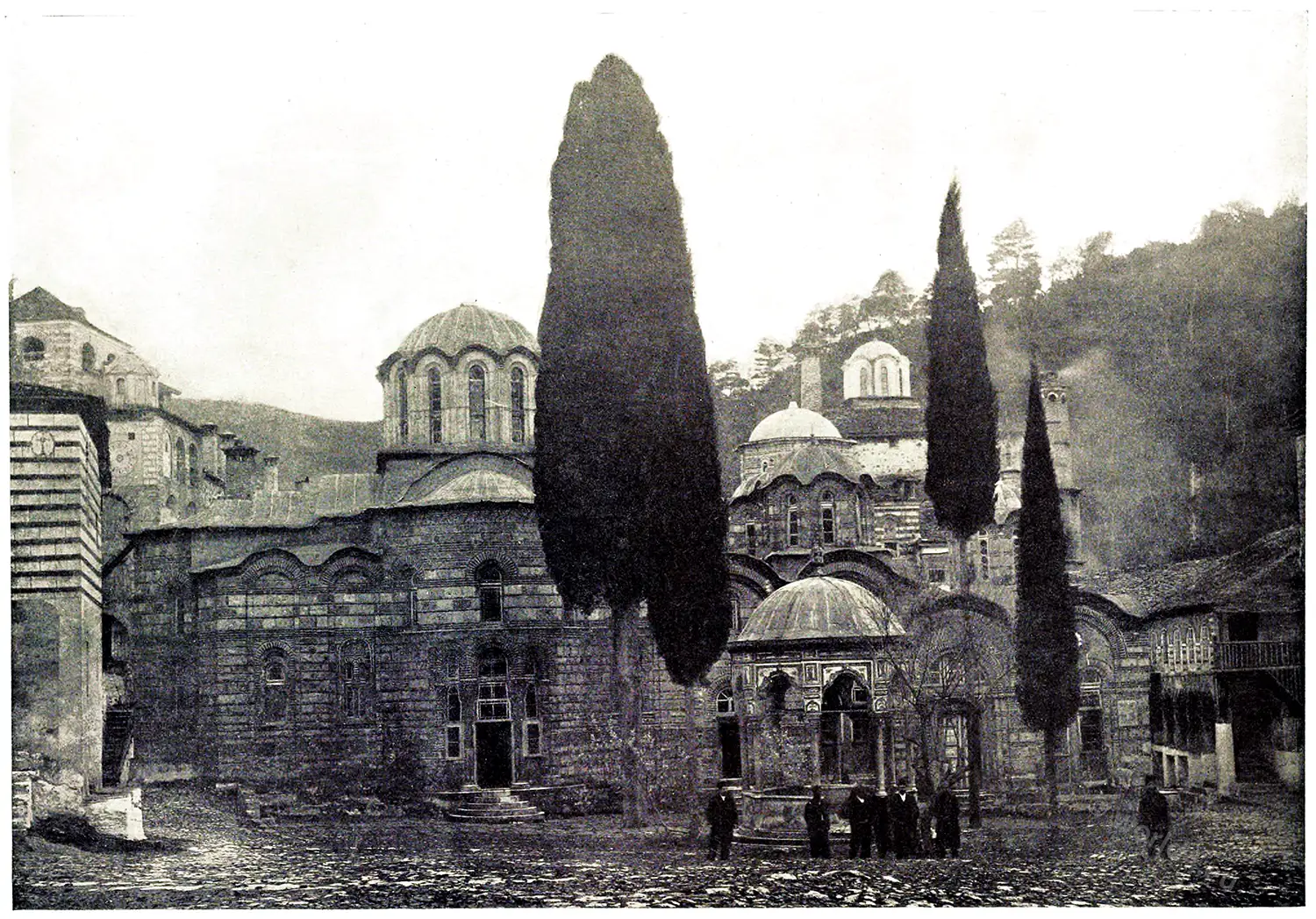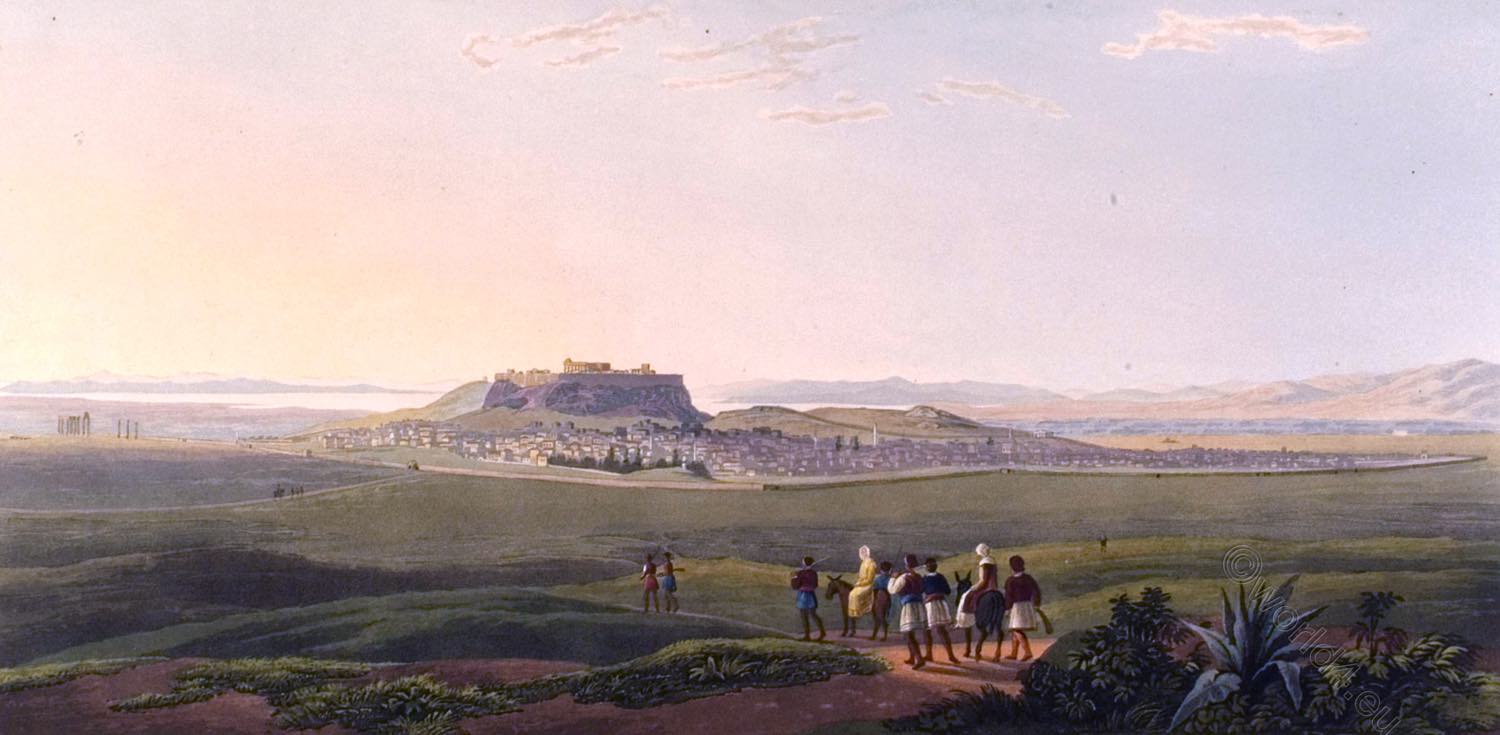
ATHENS FHOM THE FOOT OF MOUNT ANCHESMOS.
(The town seen from north-east towards the Saronic Gulf).
THE present view is taken from a marble column which is standing a little way up the western foot of Mount Anchesmos *). The town and acropolis of Athens form the principal object, and occupy the middle of the picture. The antiquities which are distinguished from this spot within the modern walls, are the Choragic monument of Lysikrates, the octagonal Tower of the Winds, the Poikile portico, the Doric portico, the Gymnasium of Ptolemy, and the Temple of Theseus.
The acropolis presents its eastern front and northern side, and the Parthenon and the Erechtheion are displayed upon its summit. The Arch of Hadrian is seen at the left, or southern extremity of the modern walls of the town, and still more to the left the majestic columns of the Olympeion rise conspicuously from the banks of the deserted Illissos. A little beyond the left of the acropolis the hill of Musæus is observed, crowned with the monument of Philopappos. To the right of the acropolis is the rock of the Areiopagos, and beyond it the remains of the Pnyx, which was one of the most celebrated Athenian tribunals.
The ports of Athens are concealed by the acropolis the Areiopagos, and the Pnyx, but part of the Attic coast is visible, particularly Cape Kolias, the outline of which is discerned over the Arch of Hadrian. The Argolic mountains exhibit their grand features on the opposite side of the Saronic gulf. The small insular rock, denominated Turlo, is descried near the southern extremity of Ægina, nearly opposite the ruins of Træzen. The whole of Ægina is seen, and, in very clear weather, the Temple of Jupiter Panhellenios appears like a lucid speck upon Mount Panhellenion.
Over Ægina are the serrated summits of the promontory of Methanæ, and the eye is delighted by the blue aerial tints of Mount Ortholithi in the remote confines of the view. Beyond the northern or lower part of Ægina the island of Angistu is seen, backed by the mountains of Epidauria. The continuation of Argolis is extended to the right of the acropolis, and the memorable islands of Salamis and Prythalia approach the Attic shore. Nearer to the field of view is Mount Aigaleos, over which is descried the summit of Gerania. The trees in the plain are part of the great olive grove.
*) Lykovounia also known as Tourkovounia, in ancient times called Anchesmos, is a range of hills in Attica, as well as a district of the municipality of Athens.
Source: Views in Greece. Drawings by Edward Dodwell. Rod Well and Martin, London, 1821.
Continuing
Discover more from World4 Costume Culture History
Subscribe to get the latest posts sent to your email.

